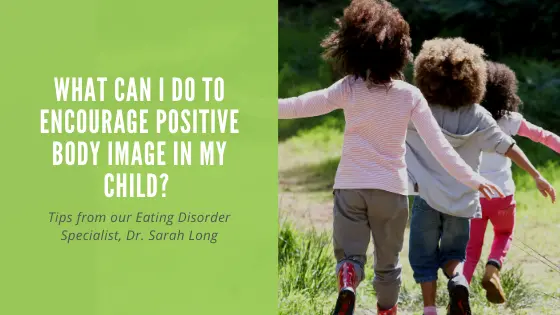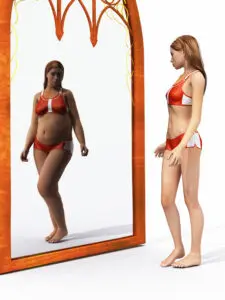While sitting with my clients and their families, I’ve seen time and time again the pain and havoc an eating disorder can cause. In these moments, I’m reminded of the importance of prevention. Although eating disorders and disordered eating can be triggered by lots of different things, negative body image is a major predisposing factor. Regardless of whether a full-blown eating disorder develops, poor body image can also lead to depression, social anxiety, self-doubt and intense self-criticism.
Therapists, educators, and parents often make the mistake of waiting until our children are in junior high or high school to start talking about things like media, body image, and self-confidence. The reality is that this often too late.
- 81% of 10-year-olds are afraid of being fat.
- 53% of 13 year-old American girls are unhappy with their bodies. This number grows to 78% by the time girls reach 17.
- 40-70 percent of girls are dissatisfied with two or more parts of their body by middle school.
- Eating disorders are the deadliest mental illness. Only 1 in 10 men and women with eating disorders receive treatment.
What exactly is body image?
Body image is not just about how a person looks, it’s how they feel and think about their body, including the way they look. There are different kinds of body image – positive, negative, or a mix.
How can I foster positive body image in my child?
Although the media and peers have significant influence, parents do too! Some of these influences are obvious, such as direct comments about a child’s weight or shape or good-natured teasing about their eating habits or developing bodies. Maybe not as obvious, but just as important, are our attitudes towards our bodies and appearance. Comments about weight, food choices, and appearance are pervasive in our society, and children pick up on what their parents say about themselves.
Here’s a few tangible things you can do to foster positive body image, even as young as the toddler years:
- Speak about your own body and what it’s capable of in a positive way. Be a positive role model!
- Avoid criticizing your appearance or eating habits. The statements our children hear when we talk about ourselves often ends up being the messages they tell themselves inside their heads.
- Reinforce that self-worth comes from what’s on the inside, not how we look.
- Praise your child for things other than appearance.
- This can be difficult in today’s media environment, but avoid media (TV shows, magazines, etc.) that emphasize beauty ideals, thinness, or muscularity. Instead talk with your child about how media promotes unrealistic images.
For more information on how to promote positive body image in our children, check out this great guide for parents. In addition to the Confident Body, Confident Child workbook and tip sheets, they even offer positive body image workshops!
Check out this list of children’s books that promote positive body image:




